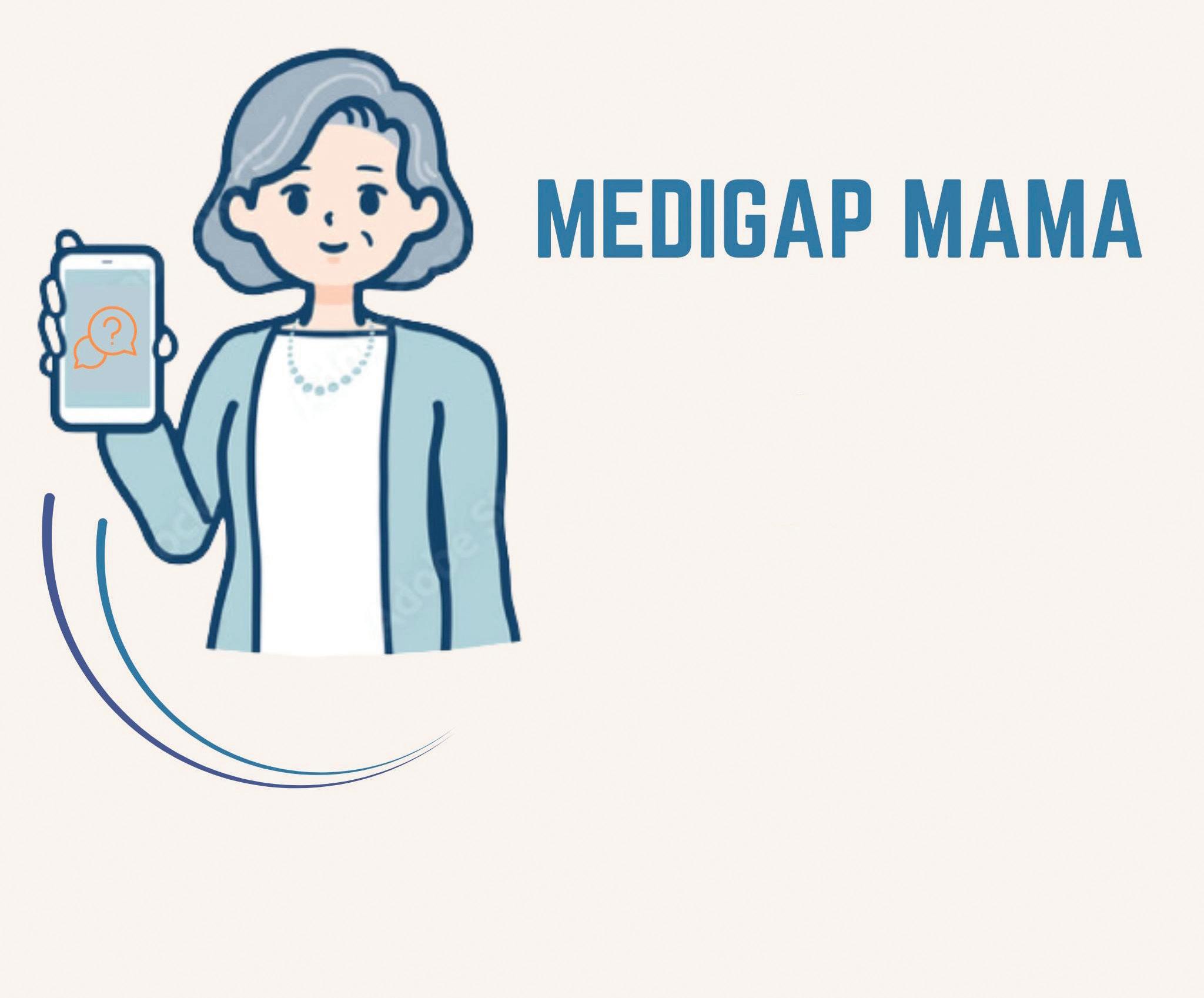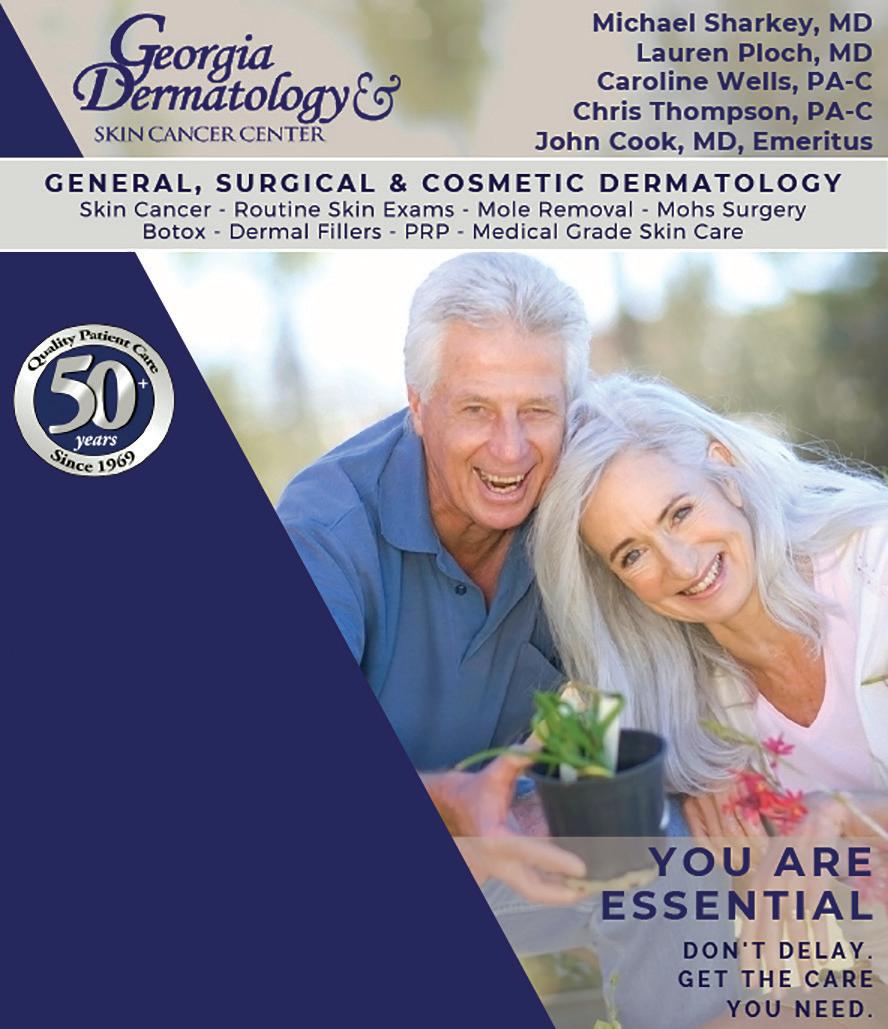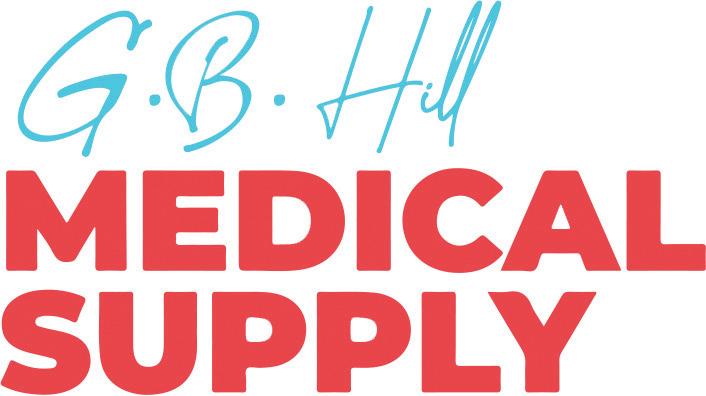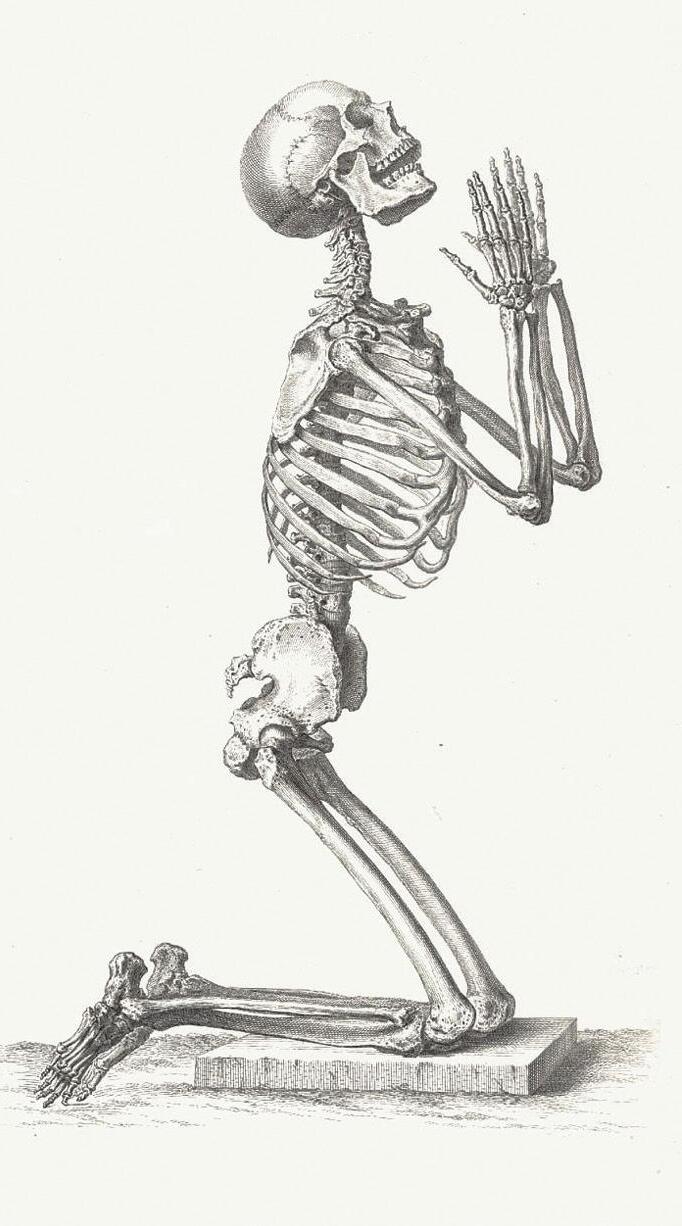

NEW SERIES!

THOUGHTS ABOUT THOUGHTS THOUGHTS
BODY DYSMORPHIA
Editor’s note: This series written by local mental healthcare professionals will share thoughts about how people think and act in ways that are perceived as different and potentially unhealthy.
Caroline is a 23-year-old who has a career, her own apartment and an active social life—who also feels she’s not perfect enough compared to other people.
When she looks in a mirror, instead of seeing a pretty face, she sees a nose that’s too big, lips that are too full, and teeth that aren’t white enough.
So she turns to plastic surgery. She’s happy with her new nose for a few months, but soon goes back to change her lip size. A few months later, she gets laser therapy to tighten and tone her face. Then, it’s on to veneers.
Pictures in magazines and social media tell her she’s still not attractive enough. She spends so much time in front of the mirror, adjusting her hair, makeup and clothing, that it affects her work; she’s either late or spending so much time in the restroom checking herself that coworkers begin to notice. She also starts to skip social situations, convinced she
see THOUGHTS page 3
BE IT RESOLVED...
re you a New Year’s resolution fan? Or a resolution hater?
Both sides in this annual discussion have their valid points.
On the negative side, by the time you read this many carefully made resolutions may have already slipped a little.
Statistically, by this date (January 10) one quarter of all resolutions have already gone down in flames; that many usually fail within the first week. By the six-month mark the failure rate is about half. And by this time next year, the wreckage of 88 percent of all those shiny new intentions of last week’s New Year’s Day 2025 will lie strewn across the landscape.
On the plus side, that means after a full year a fairly decent 12 percent of all resolutions are achieved.
Building on that positive note, making New Year’s resolutions is evidence of one of the finest aspects of human nature — that we continuously evaluate ourselves and constantly strive to improve, to be better husbands and wives, better moms and dads, better employees, better bosses, and just better human beings.
The typical resolutions reflect those basic desires: the #1 resolution every year is always some form of better health. Lose weight. Get more exercise. Eat less junk food or fast food.
Eat less, period. Quit smoking. Drink less, or quit altogether.
You really can’t fault anyone for such noble goals. After all, health is the ultimate wealth. It’s the currency that makes every other endeavor in life possible.
Speaking of currency, improving finances is, broadly speaking, the second most popular resolution category. Common examples include establishing and/or sticking to a budget; saving more; cutting impulse buys; getting a better job, a raise, or a promotion.
The third-most common resolutions might be categorized as self-improvement: read more; anger management; reduce or manage stress; watch less TV; get more education: learn a new language, skill, or hobby; improve your marriage and other personal relationships, and so forth.
All of these are worthy goals. They are well worth pursuing, even if that means getting past occasional setbacks.
Since failure is always an option, it’s good to expect it and be ready to keep making progress. There is nothing magical about January 1. If you haven’t made some kind of self-improvement goal, it’s never too late. If you’ve started and failed already, restarts are always allowed.
Whatever you set your sights on, keep t he letters shown below in mind, as well as what
A T R M S







PARENTHOOD
by Dr. Warren Umansky, PhD
Your children are past their preschool years now, yet they have never heard you say the words “I love you.” That lack changes the value children place on themselves and their motivation for pleasing those who are responsible for their success. Children of all ages have more focus and purpose when they are trying to please those who love them and who they love. But if they never ever hear those words, what becomes of them? What can you do?
A. You never had anyone tell you they love you when you were a kid and you turned out okay. So don’t worry about it.
B. If you have trouble saying the words, write an “I love you” (or “We love you”) note every day and put it in your child’s lunch box or bookbag.
C. However uncomfortable it might be for you, say “I love you” when the children go to bed every night and then again every morning when they leave for school.
D. When you sit down to dinner each night, look into the eyes of your children and say “I love you” to each one of them by name. Have them say the same to you.
If you answered:
A. Did you really turn out okay not being able to express love to your children? After all, being a loving and nurturing parent is supposed to be what it’s all about! We have teachers in school to teach academics. You are the one who teaches love and support at home, which reinforces your children learning academics and shows them how to live a successful life.
B. If you have trouble saying the words, this would be a great way to start. When you see how pleased your children are, move on from there to saying the words.
C. Yes, your children need to hear the words. Whether three months old or an 11th grader or a 26-year-old parent themselves, it’s not too late to start telling them you love them. It will be easier for them if they start hearing it at an early age. It will be just as appreciated and rewarding, however, if your children are older.
D. Families should sit around a table to eat dinner together, daily if possible. Some families have the tradition of saying “I [We] love you!” around the table to each person, if not at every evening meal, then at least weekly. What a wonderful tradition to have!
Successful children, like successful soloists, know they have an orchestra behind them. They try harder, behave better, are more respectful of themselves and of others when they know they represent more than themselves. Your job as parent is always to let them know that your love is there. And then, as parent, you share in reaping the grand rewards of successful happy children!
Dr. Umansky has a child behavioral health practice in Augusta.

CONCUSSIONS
This time of year, football season is in its peak, culminating in college bowl games (by the hundreds?) plus NFL playoffs as the pros ultimately head to the Super Bowl.
Football is a contact sport to be sure, and many players suffer concussions each year. Back in the day, players would shake off such injuries as best as they could and continue playing as though nothing had happened. As a result, many players have later been discovered to have traumatic brain injuries (TBI), often undiagnosed (and sometimes only diagnosed through their autopsies).
These days, better awareness has led to official concussion protocols that players must clear before being able to return to action.



There are many misconceptions surrounding the topic.
One of the biggest is that a concussion means a loss of consciousness, even if only for a few seconds. This is a myth. Another myth that used to be more commonly heard is that you shouldn’t let someone with a concussion fall asleep, or that sleep is ok but the person should be awakened every few hours. The truth is that sleep is vital for someone recovering from a concussion; they can sleep as often as they want for as long as they want. The more the better in terms of recovery. There is no harm in checking on the person every few hours if desired to make sure they’re breathing normally, but there is no need to wake them up. What is concussion protocol? That can depend upon


whom you ask. In its most basic form it might mean asking a few simple questions: what is your name? what day of the week is it? who is the president of the US? can you name all 12 months of the year in reverse order? Sometimes these simple tests are administered by athletic trainers whose #1 objective is to get the player back onto the field as quickly as possible.
A true medical evaluation of a possible concussion is more thorough although it still might consist solely of a verbal interview.
Doctors recommend prompt treatment at an emergency room for a blow to the head that results in dizziness, loss of consciousness (however brief), slurred speech, vomiting, unequally dilated pupils, mental confusion, and numbness in arms or legs.
Even though a headache is another classic symptom after a serious blow to the head, doctors caution against taking over-the-counter pain medications until a medical evaluation has taken place.
Sometimes people say they’ve had their bell rung, or they see stars. Those euphemisms can make a blow to the head seem minor. And it may well be, but anything involving the brain is potentially major and should be checked by a healthcare professional.

THOUGHTS from page 1
never looks right.
This is called body dysmorphia, when we’re so preoccupied with how we look that it affects our families, work or social life. Body dysmorphia also involves:
• Focusing on one or more “flaws” in our appearance— flaws that other people don’t see or notice
• Constantly grooming, checking our appearance in the mirror or asking other people, “How do I look?” (for example, people diagnosed with body dysmorphia may spend up to eight hours a day focused on their appearance)
• Overly comparing ourselves to others
• Having unnecessary plastic surgery or other procedures, or constantly working out
• Feeling anxious, depressed or ashamed
• At its worst, having suicidal thoughts
988 SUICIDE & CRISIS LIFELINE
24/7, free, confidential mental health hotline that connects individuals in need of support with counselors across the United States and its territories. People do not have to be suicidal to call. Reasons to call include: substance use disorder, economic worries, relationships, culture and identity, illness, intimate partner violence, depression, mental and physical illness, and loneliness. +
Body dysmorphia can start as early as age 12 or 13, those critical middle school years when kids start looking at their image and comparing themselves to friends. It most commonly affects young men and women at around age 18. In men, it usually manifests itself as muscle dysmorphia—worrying they’re not big enough or strong enough.
What causes body dysmorphia?
With body dysmorphia, it’s all about the environment. Maybe you were the oldest child and got all the heat from your parents. Or maybe you were the youngest and were always supposed to be the “cute” one and were constantly being told to fix your hair or stand up straight.
Perhaps you were born with a bit of perfectionism or have anxiety or obsessive-compulsive disorder. Maybe your family made things worse with regular negative comments about your appearance, or you were bullied at school. Many different factors can lead to body dysmorphia.
Treatments and how they work
Sometimes people with body dysmorphia know they’re spending too much time or money on their appearance. Other times, they’re in denial. But, if you or a loved one is so focused on appearance that it’s affecting work, family or social environments, it’s a good idea to meet with a mental health professional, who can help diagnose body dysmorphia and offer help.
The best treatment includes both therapy and medication. Cognitive behavioral therapy helps retrain your brain to get rid of negative distortions. For example, if someone worries their hair looks out of place, the therapist might have them stand in front of a mirror and guide them through various questions: “Did you comb your hair? Did you shampoo it? Did you blow-dry and style it? Do you see any hair sticking up?” This can help the person realize they have a distorted view of their appearance and focus instead on positive feedback, that yes, their hair does look groomed.
Medication—such as serotonin reuptake inhibitors (like Prozac or Zoloft)—helps reduce anxiety so therapy can be more effective.
Treatment is long-term; at times, people may relapse and need to return to therapy and medication. Without help, people with body dysmorphia can lose jobs, miss out on irreplaceable moments with family and friends, and stay isolated at home.
For anyone struggling with body dysmorphia—if you’re spending hours on personal hygiene and thousands on plastic surgery (or been refused by plastic surgeons)—the first step is just to talk to someone. Body dysmorphia is very treatable—as long as you actually get treatment.

Daisy Hazel Drayton is a Doctor of Nursing Practice, Advanced Practice Registered Nurse and Psychiatric Mental Health Nurse Practitioner–Board Certified at Integrated Psych Solutions. IPS provides inpatient and outpatient mental health services, with or without a referral, to help patients and their families progress through the care journey. To make an appointment, call 706-204-1366 or visit integratedpsych.care.




WHAT ARE HEART PALPITATIONS?
Some people use the word palpitations as a synonym for excitement or a case of nerves. “I was having palpitations before my big presentation!”
They might mean that figuratively, but then again, they could be talking literally.
Exactly what are we talking about?
Heart palpitations are that unexpected feeling you get, maybe when you’re relaxed and doing nothing at all, of your heart suddenly pounding or racing. Then again, heart palpitations are the very much expected but unwelcome feeling we may experience before a big moment like a speech at work or a make-or-break presentation for a big client.
Some people have palpitations when they drink too much coffee, when they exercise, when they take certain medications, licit or illicit, when they eat spicy foods or drink alcohol, when they lie down, when they’re pregnant... there can be any number of reasons, and just about anyone can experience them, although they’re more common among women.
Studies have shown that heart palpitations are among the top reasons people visit a cardiologist. The problem is that for most people they come and go, seemingly without rhyme or reason, so they may not happen during a doctor visit.
Heart palpitations are not generally serious or harmful, but even so, it doesn’t hurt to have your doctor check out the situation. Anyone who visits a doctor for this reason should offer as much helpful information as possible, such as what seems to trigger them (actions, diet, medications, time of day, how long they last, what they feel like, what helps them go away, etc.). Naturally, a doctor visit is automatic if palpitations are accompanied by something serious like intense pain, dizziness, shortness of breath, or if they are getting steadily worse or happening more often.
Doctors may evaluate the stuation by listening to your heart or running an EKG, having you wear a heart monitor for a day, taking blood samples, having you take a stress test, and in every possible way getting to the heart of the matter. +

www.AugustaRx.com
Direct editorial and advertising inquiries to: Daniel R. Pearson, Publisher & Editor E-mail: Dan@AugustaRx.com
AUGUSTA MEDiCAL EXAMINER P.O. Box 397, Augusta, GA 30903-0397 (706) 860-5455
www.AugustaRx.com • E-mail: Dan@AugustaRX.com

www.Facebook.com/AugustaRX


Who is this?

Considering the family history of this man, it would have been a minor miracle (albeit a sad one) if he did not make a name for himself in medicine. As it happened, however, he did make a name for himself, and benefited countless people around the world in the process.
Before we get that, a few words about his pedigree.
Our subject, Rickman Godlee, was born in February of 1849 in Essex, England, the second son of a Quaker family. His parents were Rickman and Mary Godlee. Mary’s maiden name was Lister, our first clue to the rarefied air in which this man was raised. Yes, this was the same Lister family which produced Joseph Lister, one of the first notables profiled in this long-running Medical Examiner series (#12, in our 12/4/15 issue). Lister, as you will recall, revolutionized surgery through his advocacy of sterile techniques.
Mary Godlee’s father, however, was not that Lister. Her father was Joseph Jackson Lister. His children included both Mary and her brother, Joseph, of surgical sterile procedure fame. Other than sire children who went on to build families with medical prodigies of their own, Joseph Jackson Lister is known for being instrumental in the development of the optical microscope.
Getting back to Rickman Godlee, the family tree we just reviewed means that the world-famous Joseph Lister was Uncle Joe to him. No doubt inspired by his uncle, Godlee pursued a medical education and was admitted to the Royal College of Surgeons at just 23 years of age. Known as a skilled anatomist and artist, he was given the assignment of producing the original plates for Richard Quain’s Anatomy, a notable illustrated medical guide of the day.
Soon after Godlee earned his medical degree he moved to Edinburgh to learn surgical techniques under the tutelage of his uncle. Upon his return to London he progressed through a series of notable appointments that helped to broaden and improve his surgical skills.
To take two examples, he became surgeon at Brompton Hospital in London, where he made significant advances in thoracic surgery, and soon after (in 1884) at the Epileptic Hospital, Godlee made medical history by becoming the first person to surgically remove a brain tumor.
In the early years of the 1900s, Godlee was appointed Surgeon to the Household of Queen Victoria, and Surgeon to both Edward VII and George V. Godlee also found time to use the close association with his noted uncle to write the noted and intimate biography, Life of Lord Lister
Godlee spent his retirement as a gentleman farmer in Oxfordshire, west of London, where he died in 1925 at age 76 +
Middle Age
BY J.B. COLLUM
I have written at length about learning our new limits as we age, but I don’t always practice what I preach. Perhaps I should rephrase that. Sometimes, on rare occasions, I practice what I preach. This past week has been a textbook example of this phenomenon. To be clear, it is a textbook example of not doing it.
The late great Isaac Asimov, the famed and prolific science fiction, science fact, and mystery writer, once wrote of a photogenic memory. Not to be confused with a photographic memory where you remember everything you ever see (technically called eidetic memory, but don’t quote me on that. I even had to look up how to spell it). No, a photogenic memory is where you remember things much better than they actually were. It is a common affliction. Just ask women who have given birth more than once. If they had photographic memories instead of photogenic memories, our population would never have reach four people, much less the billions alive today.

{ { IT LOOKED LIKE HE WAS REACHING FOR A GUN
In my case, as well as my wife’s, we recently forgot how hard it was to take children to a theme park or anything similar. The long lines and the specter of getting separated, combined with rambunctious, impatient, ungrateful children prone to wandering off and complaining about everything, seemed just fine in our rearview mirrors, but the reminder we got this week is something I am planning on carving in stone and placing in a prominent position in our home so that we will be reminded to never do it again.
As bad as it was when our children and we were young, now it is orders of magnitude worse. Add to that the fact that we have only been raising our grandchildren for the past two years, so we haven’t had time to instill the same lessons and values in them as we attempted to do with their parent. Add the fact that they are “Covid babies” who missed out on some social skill building in a very formative time in their lives, and you have the ingredients for a perfect storm just waiting for the right stage to show up on. Let me tell you, a theme park is the perfect petri dish for that.
We were staying in Pigeon Forge, Tennessee for the week, and since almost all kids, like ours, are out of school for the winter break, every place we went was wall-to-wall children towing along bleary-eyed, tired, and at times frantic parents. Our first full day, we went to The Island, a fun-filled place with restaurants, shopping, rides for little kids and some even for big kids like us. It did not get off to an audacious start since I forgot that I was somewhat old and had arthritis and got myself into the middle of a fight in the parking lot. We were nearly into or onto (?) The Island, when I realized I had forgotten my medicine, so everyone else headed to the first ride on our list while I headed back to our car. I’m not quite sure why I insinuated myself into a fight between two men, but per-
haps it was the dad or granddad in me. The two men were in a standoff right in the way of me getting to our car, so that could have been it. They were shouting at each other and I, perhaps stupidly (perhaps?), stepped in to try to bring peace. As I got between them and said something to try to wake them up from getting into a fight in front of their wives and kids and perhaps ruining what was supposed to be a fun day, one of them was reaching around his back like he was going for a gun. The other guy pointed this out in disbelief, and I just said something like “Whoa! We don’t need that!” By this point I had a hand on each of their chests as they traded insults. I asked what was going on, and the younger man to my left claimed that the older man had run into a vehicle and was trying to flee the scene. To that claim, the accused said that was a lie. He added some other choice words, but this is a PG column, so I will leave them to your imagination. He admitted to hitting a car, but he and his wife said they weren’t trying to flee. The younger man, who turned out to be a US Marine, said he had the whole thing on dashcam. I asked which car, and, wouldn’t you know it, they pointed to my car. Of all the SUVs in all the world, they ran into mine (apologies to Bogie).
I then told them it was my car and that I didn’t see any readily apparent damage and besides, it is just a thing and nobody needs to be hurt over a thing. I told them I wasn’t upset and so they didn’t need to be. I don’t really know where my calm nerves and words came from. I think I was channeling all the lessons I learned from my late even-keeled father. Thank God for him teaching me those lessons. More by his example than in lessons. I asked them to let me speak to them one at a time because every time one of them spoke, the other called it a lie among other things. So, the man who had run into my car went back to his car to get his insurance card while I talked to the marine. The marine spoke loudly enough for the other guy to hear him and when he repeated that the guy was trying to run away, that set the other man off and he charged back over toward the marine with his fist drawn back while calling the man’s mother a female of the canine variety. I had to jump in between them again and calm them down and fortunately I was successful. When the marine and I were alone again, I asked him to keep his voice low to avoid further conflict. He did as I requested and we traded information so I could call him or get a copy of his dashcam footage if I needed it. During this, I had noticed some minor damage to our front bumper and although I wasn’t sure yet if the other guy had caused it, I thought it best to have the information and evidence if needed. I thanked the marine and said it was probably best if he moved on and parked elsewhere and he agreed.
from page 1
they stand for.
Specific - “Lose weight” may be the most common goal, but there’s a great reason it’s also the top failure: it’s too vague. Imagine instead setting a goal of losing one pound a week. That’s specific. And at year end, it will be significant.
Measurable - Thanks to the bathroom scale, a weight loss goal can easily be measured. So can the balance in your savings account. Always try to choose goals that are easily measurable.
Achievable - It might be nice to own your own
MIDDLE AGE
from page 4
business by this time next year, but is it realistic? Perhaps. Achieving major goals requires careful attention to the first two steps. Set specific, measurable landmarks to reach along the way.
Relevant - It may be your lifelong dream to learn French or play the saxophone. Go for it. Are there other goals you can also pursue that will have more tangible (measurable) benefits? Whenever possible, balance the pursuit of “dream” goals and more immediately realistic, practical goals.
Time-Specific - Human
nature being what it is, it’s all too easy to procrastinate. The old, “I’m starting a diet — on Monday — next Monday” won’t help. Be specific.
In closing, don’t overlook the sublime benefit of resolutions that will never make it to the Top Ten list of common resolutions: think about doing a specific daily act of kindness; consider a resolution to instantly crush a negative or complaining thought the second it pops into your head; resolve to adjust your moral compass on a regular basis to keep your beliefs about right and wrong fresh and strong; resolve simply to be a better human being.


My conversation with the man who ran into our car was pleasant after that and we traded information. He and his wife and I left on great terms. I told him not to worry about it, that he should enjoy his day and that it wasn’t a big deal. He thanked me for stepping in and being calm about it. I thanked God in another prayer after that. Considering all of the health issues I have, it really wasn’t a good idea for me to get involved physically, but it turned out alright. Perhaps I should have called the cops instead, but I have no regrets since everything turned out fine. I think it did because most of my ailments aren’t readily visible to the naked eye and I did outweigh the two men combined. One of them even told me I looked quite intimidating and that gave
him pause. I credit my beard. My wife says it makes me look mean. She actually said meaner looking. I can’t help it that I have a resting angry face. I am actually a jolly guy, which is probably why my white beard and large belly get me funny looks during this season.
Believe it or not, that was just Day One of my mistakes. And it wasn’t even the worst day. That is yet to come in part two (or maybe even three) of my lesson. I hope you will come back to read that in our next issue.

J.B. Collum is a local novelist, humorist and columnist who wants to be Mark Twain when he grows up. He may be reached at johnbcollum@gmail.com



GIRL ON THE RUN
Rhonda: An average girl, she ain’t. Had to run away from home in her teens because a rogue uncle wanted her in most ungentlemanly ways. She couldn’t call the High Sheriff because he was a drinking buddy of the wayward uncle. Who would believe a pubescent 14-year-old Rhonda had she called out a semi-pillar of the community? Impunity, she did not have.
And back then, Rhonda did not know anyone in a certain “secret society” who tended to things when a woman was mistreated. Uncle was persistent and was venturing beyond suggestive marks. His hands wandered when no one else was around. So Rhonda scooted out of town, braving the cruel world as a teenager on the run.
Uncle was a married man and semi-respected man in town. Nobody knew of his carnal inclinations towards Rhonda. In his mind, he figured her fair game. She was tall. Hair had a reddish tint.
BASED ON A TRUE STORY
(most
of the time)
A series by Bad Billy Laveau
Curves in all the right places as Mother Nature’s hormones did their job with efficiency. Social norms and genetic ties bound him not. Nor the two-decade age difference. He worried naught about getting caught. He figured Rhonda would be flattered by his manliness and thrilled by the new feeling he would bring her. His misguided imagination ran wild all the while.
Rhonda felt differently. Uncle enamorization was not in her. Her innocent boyfriend treated her with respect and kept his inclination above her waist like a good teenager should. He knew not of her plight that Rhonda concealed with all her might.
Rhonda had urges, but they were kept in check. Neither the time nor situation were right for the “big issue over a little tissue.” Rhonda was neither stupid nor weak. She packed a few clothes and down the road she went with earnest intent.
She could not rely upon family. They would not believe a vulnerable-looking little girl. They would figure her hormones were getting the best of her. That her imagination had taken a turn to the left.
Rhonda split for Florida where she picked and packed fruit and veggies. She liked the job, but it was seasonal. Finally, she worked her way out to Kansas City. Jobs varied. So did pay. She clerked in an old-time country store.
Time ticked on. One day a tall, good-looking guy wandered in. His Stetson, cowboy boots, fitted tee shirt, tight jeans, and friendly grin struck a chord with Rhonda. He said, “Is your name Cher-

ry?” She said, “No, why?” He said, “Well, it is now. And it is mine. Come work for me.”
The next week, Rhonda found herself manager of his dinky little club called The Rainbow Inn. It was not an inn and did not have a rainbow. And the little tissue was no longer an issue. She was 19. They lived together without benefit of clergy. He was older and much more worldly. Times were good for a time. But after a few months, she caught him with his pants down with one of the cowgirls who hung around The Rainbow Inn. Rhonda split the sheets and was gone again.
She had a few stops along the way, gaining experience and self-esteem.
Eventually, she found a solid man who wanted her in a socially acceptable way. They got married in a fever, hotter than a pepper sprout, to borrow a line from June Carter and Johnny Cash. He was a post-Vietnam Vet with PTSD. He was older. He drank. Together they struggled. Rhonda didn’t whine. She had seen higher hills to climb. She set about a 2-year struggle to get him VA benefits. VA rejections slid off her back like raindrops on a greased duck. And of course, she won. He got a sizeable back pay settlement and a nice monthly check for life. They bought a few acres on a mountaintop in Arkansas. Built a comfortable house. And tolerated the occasionally bear meandering through their backyard at night. Hubby hunts deer in season. Rhonda cooks fabulous meals and maintains a perfect figure. No alcohol or tobacco allowed now. A cure for sure. Rhonda works miracles.
Along the way, Rhonda was invited to a family reunion back home. Uncle would be there in all his glory. Rhonda had had enough of his self-righteous ways. She showed up at the reunion, dressed to the nines, looking better than any woman there. She had the genes for that and the determination and inclination.
When the time was right and attentions focused, in a loud, controlled voice, Rhonda confronted Uncle and his second wife. Rhonda detailed how he hounded her and even put his unwelcomed hands on her and under her clothes when she was 14.
Sharp eyes and chilled tones reevaluated Uncle. Heavy voices scolded him. Second wife was appalled and divorced him. Shortly thereafter, Rhonda got a letter from a lawyer saying Uncle had died and Rhonda was his sole heir. Rhonda wrote back that she did not want anything he had ever touched and it all should go to Second Wife who had lived with the repugnant human reject. (Actually, Rhonda’s words were a bit more earthy and justifiably so. The Good Lord should forgive her for her more accurate description.)
Rhonda now thrives in a life of peace. Occasionally, she gives me insight into her past adventures. Her daily texts warm my heart. I’m grateful she allows me into her thoughts. She works pro bono with veterans whose VA benefits have been unjustly denied. Her success rate is 100%. (That doesn’t surprise me, nor should it you.) Not bad for a country girl living on a mountain top who hears bears outside her window. Perry Mason would be proud her record.
Most of us have had a few bumps in our roads traveled. But Rhonda’s trek makes ours look like a moonlight walk under the stars.
The world is fortunate to have many Rhondas. I am honored to know my Rhonda. You should pray when difficulties befall you, that you too can lean on some Rhonda-style grit, determination, and survivability. And if you say you don’t have it hidden deep within you, then you haven’t been pushed hard enough nor bounced back as high as Rhonda.
Just hearing the name Rhonda should make your eyes tear up, just before your face beams with pride of a job well done by a girl on the run. +


TRYTHISDISH
by Kim Beavers, MS, RDN, CDCES Registered Dietitian Nutritionist, Chef Coach, Author Follow Kim on Facebook: facebook.com/eatingwellwithkimb
CRUSTLESS SPINACH QUICHE
This is a great easy and quick meal to rotate into the weekly menu.
Ingredients
• 2 teaspoons canola oil
• 1 medium Vidalia onion, finely chopped
• 1 10-ounce package frozen spinach, thawed and drained
• 6 ounces light cheddar cheese, grated (about 1 ½ cup)
• 5 large local farm fresh eggs
• ½ cup light cottage cheese
• ¼ teaspoon salt
• ¼ teaspoon pepper
• 1/8 teaspoon grated nutmeg
• ¼ teaspoons ground red pepper (cayenne)
Directions
Preheat oven to 375°.
Coat a 9-inch pie plate with cooking spray and set aside. Place a nonstick skillet over medium-high heat and add oil. Next add onion and sauté for 5 minutes, or until translucent. Add spinach and stir until moisture has evaporated, about 3 minutes. Sprinkle cheddar cheese evenly in prepared pie plate and add the spinach mixture.
In a medium bowl, whisk together the eggs, cottage cheese, salt, pepper, grated

nutmeg and red pepper. Pour the egg mixture evenly over spinach. Bake for 30 to 40 minutes, or until set. Let stand for 5 minutes, then cute into wedges and serve.
Yield: 4 servings
Nutrition Breakdown: Calo-
ries: 230, Fat 15g (6g saturated fat), Cholesterol 300mg, Sodium 700mg, Carbohydrate 8g, Fiber 1g, Protein 23g
Carbohydrate Choice: ½ Carbohydrates
Diabetes Exchanges: 3 Medium Fat Meats, 2 Vegetables







IT TAKES ONE TO KNOW ONE
by Ken Wilson Steppingstones to Recovery
When I was a kid I confess I chimed in at times with other classmates in name-calling – not good names either! I remember using “you jerk” and “you’re a nerd” and often the accused would reply “it takes one to know one!” Some would say “point your finger at me and you have 3 pointing back at yourself!” I eventually realized that truth and put that talk away.
In a way, though, it takes one to know one is true. A few years ago I was seriously in the market to buy a travel trailer for camping and did, in fact, do so. But I didn’t trust the sales people on camper lots to be totally forthright with me. A little helpful, but they had a product to sell and they were assertive about doing so. I
did not find unbiased opinions on their turf!
So I consulted with people who had camper trailers already…many, many people who were patient with my barrage of questions. They saved the day! I put their input on paper and bought a super duper one!
Recently a medical doctor jotted me an email saying “I have so many patients with alcohol problems, and I refer them to appropriate care but they rarely follow up. I feel so helpless. What advice would you share to help me?”
A few ideas come to mind. First, if you are trying to help an alcoholic (or addict), realize that he/she will probably not trust you to understand their situation because they know you haven’t “been there, done that” like they have. Of course, this is a not good reason for them to

avoid taking you seriously because it is not necessary to be a female to be a good gynecologist! Or to have lost a loved one to cancer in order to help one who has. It can be helpful to have “been there…” but not necessary.
Second, if a first attempt at directing an alcoholic to get help doesn’t work, drop it. Work with a family member instead. For instance, refer his wife to the program of Al Anon. Have her watch a great Hallmark Hall of Fame movie, “When Love Is Not Enough: the Lois Wilson Story” – about the beginning of Al Anon by the wife of Bill Wilson, the founder of Alcoholics Anonymous. A local meeting schedule is easy to find online. She must commit to going at least half a dozen times just for starters.
Third, accept that you are powerless to change someone else – but you can
die trying! If that is hard to accept, ask yourself “Who in this world has the power to change ME?!!!” For me, at least, that’s a big “nobody.” If you know something I don’t know, do tell! Greater pressure put on somebody to stop drinking will be met with greater resistance than you ever thought possible.
Fourth, realize that there are no guarantees. You can do everything right and still lose the one you love to the illness of alcoholism. Everything. Somebody recently put it to me this way, “God made two perfect children and look what happened!”
Fifth, know that pain is the great teacher. It could be physical pain, emotional pain, financial pain triggered by loss of employment, ad infinitum. “Enabling” an alcoholic is the effort to save him or her from the con-

sequences of their choices. Don’t.
Lastly (for now), network around and find another alcoholic in recovery who would be willing to talk to your alcoholic friend. In healthcare, have your patient sign a Release of Information to the other person to get clearance to play matchmaker with them! A book could be written on how this method is probably the most effective in helping your friend.
Because it is kinda sorta true that it takes one to know one.
WE’RE BEGGING YOU
We’re never too proud to beg. What we’re begging for is “Everyone Has a Story” articles. With your help, this could be (should be) in every issue of the Medical Examiner. After all, everybody has a story of something health- or medicine-related, and lots of people have many stories. See the No Rules Rules below, then send your interesting (or even semi-interesting) stories to the Medical Examiner, PO Box 397, Augusta, GA 30903 or e-mail to Dan@AugustaRx.com. Thanks!
“And that’s when I fell.”
“He doesn’t remember a thing.”
“It was a terrible tragedy.”
“I retired from medicine seven years ago.”
“She saved my life.”
“I thought, ‘Well, this is it’.”
“They took me to the hospital by helicopter.”
“Now THAT hurt!”
“OUCH!” NOTHING SEEMED TO HELP, UNTIL...
“The cause was a mystery for a long time.”
“The nearest hospital was 30 miles away.”
“I was a battlefield medic.” “We had triplets.”
“He was just two when he died.”
“I sure learned my lesson.”
“It seemed like a miracle.”
“It was my first year of medical school.”
“It took 48 stitches.”
“The ambulance crashed.”
“I’m not supposed to be alive.”
“This was on my third day in Afghanistan.”
“I lost 23 pounds.”
“At first I thought it was something I ate.”
“My leg was broken in three places.”
“Turned out it was just indigestion.”
“The smoke detector woke me up.”
Everybody has a story. Tell us yours.

To find out how much added sugar is in a food, we can consult the Nutrition Facts label.
Let’s review the Nutrition Facts label in the sample shown.

Tasty tips from registered dietitians with the Augusta Dietetic District Association
HOW SWEET IS IT? FOODISMEDICINE
by Ari Redcross, MS, RDN Speciality Care Outpatient Dietitian
2025 is now upon us, and as we start to think about the new year and our nutrition, there may be some nutrients we want to add more of and some ingredients we want to reduce. Today, I would like to focus on reducing added sugars.
MyPlate is a visual guide to the ideal plate, which includes fruits, vegetables, protein, and carbohydrates. These food groups provide us with the vitamins, minerals, protein, and other nutrients we need. In addition to these major food groups, we may add other items to our plate to excite our taste buds, such as sugar.
Sugar is a simple carbohydrate. We add it to foods such as baked goods, sauces, soups, condiments, and often breakfast foods and restaurant menu items. When we add sugar to our foods, it is called “added sugar.” This should not be confused with naturally occurring sugars. For example, fresh fruits contain sugars like fructose and glucose, and dairy contains milk sugars known as lactose. Today, I want to focus on the effects of added

dietary sugars.
The addition of sugar to our diets can put us at risk of adverse health effects. Sugar, on its own, doesn’t contain any nutrients that are beneficial for the body. When we consume foods with natural sugars, like a peach, we also get fiber (a nutrient that promotes regularity and supports blood sugar control), as well as vitamins and minerals not found in added sugars alone. Some sweeteners, such as maple syrup or honey, are considered by some to be “natural” sweeteners, but because they are types of sugars, they still contribute to our overall added sugar intake.
The American Heart Association recommends limiting added sugar to about 6% of daily caloric intake. For women, this means 6 teaspoons or 24 grams; for men, it’s 9 teaspoons or 36 grams.
• The serving size is 2/3 cup.
• Keep in mind that if you eat more than 2/3 cup, the added sugar content will increase accordingly (e.g., double or triple the amount, depending on your portion size).
• The “Total Carbohydrates” line includes the total sugar content, added sugar, and fiber content in the food.
• Total Sugars includes all the sugar found in the food, both naturally occurring and added.
• Added Sugars includes only the sugars that are added during processing and are not naturally found in that food.
In the sample, the nutrition facts label shows 10 grams of added sugars. Since 4 grams is equal to a teaspoon, at 10 grams this food contains about 2.5 teaspoons of added sugar in 2/3 cup. It also contains about 2 grams of naturally occurring sugar, which does not contribute to the added sugar count.
If there is no nutrition facts label on a food item, the ingredients list can provide clues about whether the food contains added sugar, even if we don’t know the exact amount. Look for ingredients such as cane sugar, honey, maple syrup, high fructose corn syrup, or molasses. These are just a few names that signal the presence of added sugar.
To start cutting back on added sugar intake, think about the foods and beverages you may be consuming that could be contributing to your sugar intake. In addition to foods we might expect to have added sugar, we should also review less obvious sources, such as salad dressings, ketchup, or even oatmeal packets. You could try adding some fresh blueberries or a 1/4 cup of raisins to your morning oatmeal, or opt for a new ketchup brand that uses fruits and vegetables to provide natural sweetness and flavor. Any steps you take to reduce added sugar will be a sweet way to start the new year.
For more information check out the American Heart Association or the Dietary Guidelines for Americans.








CRASH COURSE

More Americans have died on US roads since 2006 than in World Wars I & II combined
The other day, I came to a stop sign at a T-intersection with obstructed sight distance to either side. I stopped my vehicle behind the white line and as I scanned the road for traffic. Another driver, let’s call him Joe, pulled into the turn lane next to my car. He was going to turn in front of me onto the road where I was stopped. I looked to my left to see that there were cars coming. I prepared myself for a patient wait at the stop sign when suddenly I noticed that Joe was cutting the corner, accelerating and coming within inches of the front of my car. His angle was so sharp he barely made the turn, forcing him to come dangerously close to me.
cause of death on the job. Even if Joe wasn’t driving, he is vicariously liable for that vehicle. Joe has a vested interest in making sure that his company is represented in a positive way, as does every employee driving a company vehicle.
{ {
BAD DRIVING IS BAD FOR BUSINESS
Wow. What could be so important to Joe that he couldn’t wait for a couple of cars to pass before making that turn? As I reflected on what just happened, I recalled that the double yellow line to my left extended just in front of my front bumper, and I remembered seeing Joe’s vehicle almost entirely cross those yellow lines. But what did I remember most? Joe had his business advertised all over his vehicle. There it was, staring me in the face: Joe’s Contracting: Your trusted source for roofing, siding and gutters I would never call Joe no matter what shape my roof was in. If he runs his business the way he drives, I wouldn’t want him working on my house. Do you think that Joe thought about the fact that his vehicle was wrapped with his company’s logo and his phone number? Do you think he had any concern with the choice he made racing oncoming traffic and cutting that corner like he did? Worse yet, what if the driver wasn’t even Joe!
Like so many organizations, Joe’s Contracting has employees driving on our roads and interacting with other road users, and they are a huge liability for their organizations. Motor vehicle crashes are the leading
One way to ensure that is to qualify every driver. Check their driving record, provide in-service driver training that introduces potential drivers to the vehicle they’ll use in their work, and use driver monitoring systems (available in cell phone apps or via hardware installed in the vehicle) to gather data for coaching opportunities. A workplace safety culture is represented by every action that you take, including your driving choices on and off the job.
The National Safety Council has resources for companies of all sizes. The Fleet Essentials program is an online, modularized series that enables employers to assign training to drivers based on the specific vehicle types they may be expected to drive. As a bonus, if a driver completes a defensive driving course, Fleet Essentials core courses and a vehicle-specific course, the employee can be recognized with the vehicle-specific Safe Driver Designation. If your drivers have CDLs, they may also benefit from NSC Professional Truck Driver courses (PTD).
Protect your people. Ensure they have the knowledge, training and equipment to make it home safely. Proper driver qualification requires background checks, in-service training, just-in-time training or remedial training, annual refresher training and retraining every three to four years.
Joe’s driving wasn’t doing his business any favors. How does your organization compare to Joe’s?
by Ryan Pietzsch, MS National Safety Council +
THEMEDICALEXAMiNERJOKESPAGE



NOTICE! EXAMINER + MEDICAL THE


The blog spot
— posted by Joseph Parker, MD on Dec. 21, 2023

The Drug Enforcement Administration (DEA) often quotes big numbers to reporters, who dutifully throw them into the news without context. In a DOJ press release after a physician’s arrest, it was announced that the doctor had “in the two-year period analyzed… prescribed approximately 1.2 million dosage units of opiates, including oxycodone and hydrocodone, to approximately 1,508 patients (approximately 847 dosage units per patient).”

THE DOCTOR PRESCRIBED 1.2 MILLION DOSES OF OPIATES
That sounded like a lot to the public, each of whom was a potential juror, and even to other doctors in the area. When one doctor remarked about the “extreme” prescribing practices to a colleague who happened to be a pain specialist, the pain specialist rejected the argument.
You see, the pain specialist had run the numbers the right way. If a doctor prescribed 1.2 million doses to 1,508 patients, the dosage per patient would have actually been 795.8. This should have cued any reporter with a calculator on their phone to look closer, but sadly, it did not. There would need to be 1,277,276 total doses (an additional 77,000 doses) to result in the breakdown of 847 doses per patient for 1,508 patients. All by itself that was a significant error, but the pain specialist didn’t stop there. This was over a two-year period. Twenty-four months. Divide the 847 total doses per patient by 24 months, and you come out with an average dosing per month per patient of 35.3, well below the 50 monthly doses recommended by the state and far below the CDC’s recommendation of 90.
Why does the DEA report numbers this way? Because they trust that the U.S. media will not bother to fact-check what they are told, and the government is not often disappointed. Patients will fall on a bell curve and the government will sift through the data, aided by unscrupulous data technicians, to identify a few out of thousands that had extreme problems or were particularly difficult to get on the right track. Out of 36,192 patient visits that would have occurred with that many patients over that period of time, the aforementioned arrested physician was brought to trial on charges for just five visits. These five allegedly problematic patients were then held up to the jury alone, without context, as indicative of criminal intent from “willful ignorance” of the risk of overdose and addiction.
That doctor was me. I was convicted on four of the five charges. I had begged my attorneys to get a statistician, but they refused, I think because they didn’t understand statistics sufficiently themselves. Many doctors don’t. All those numbers are just too much. We don’t want to confuse a jury with facts, after all.
Dr. L. Joseph Parker is a distinguished professional with a diverse and accomplished career spanning the fields of science, military service, and medical practice.







You got kicked out of the coffee shop? What happened?
They have a sign that says “No WiFi. Talk to each other like it’s 1975.”

ACROSS
1. _____ Park (Augusta neighborhood)
5. It hangs up in your throat
10. 2003 Asian outbreak
14. A long, long time (var.)
15. Savannah, for one
16. Central Avenue’s erstwhile Cafe Du _________
17. Rave partner
18. De facto county seat of Columbia County
19. Sea eagle
20. In proportion
22. Lion’s den?
24. Surge
25. Convent dweller
26. Chapter of the Koran
28. Summerville team
32. Prepare for publication
35. Masters’ month
37. Inhibitor introduction
38. Flee
39. Deity
40. Did possess
41. Oxidant beginning
43. Ribald; racy
45. OSHA chemical safety sheets (abbrev)
46. Namesake of a local Mill?
48. Distinctive atmosphere
50. Massage establishment
51. Linger aimlessly
55. December 26 focus
59. Direct route
60. American _____
61. ______ cell
63. Overdue
64. Meter prefix
65. Masculine prefix
66. Minerals
67. Shy poet’s abbrev?
68. Departing
69. Biblical weed
WORDS NUMBER
by Dan Pearson
I only gave them 50 cents for my coffee, then I sat down and lit a cigarette. So? So I guess I took the sign too literally. Meaning what?


THE MYSTERY WORD
The Mystery Word for this issue: CAENVCTIA
Simply unscramble the letters, then begin exploring our ads When you find the correctly spelled word HIDDEN in one of our ads — enter at AugustaRx.com
We’ll announce the winner in our next issue!
DOWN
1. A Marx brother
2. Long
3. Benefactor
4. Give to, as a responsibility
5. Urine duct
6. “Long live!”
7. Charlottesville school, in brief
8. Grant temporary use of
9. _________ Oak (once the symbol of AU)
10. Breastbone
11. Old-time plane starter
12. Wife of a rajah
13. Hard white fatty tissue in animals
21. The acronym before GRU
23. Type of boat
27. Score for newborns
28. Seaport near Mecca
29. Exclamations of contentment or relaxation
30. What often comes after Washington
31. Crib death abbreviation
32. Periods of history
33. Type of basketball score
34. Monetary unit of Peru
36. Artists’ ______
42. Diabetic’s injection
43. Freeform type of chair
44. Christmas burning
45. One-piece bathing suit for women
47. WACG network
49. Fish eggs
52. Pageant winner’s headwear
53. Sign on many doors
54. Summerville library
55. Daytime talk show host (and All My Children alumna)
56. Paradise
57. Lawnmower maker
58. Monte _________ Ave.
59. Type of burner?
62. Reagan “Star Wars” letters
DIRECTIONS: Every line, vertical and horizontal, and all nine 9-square boxes must each contain the numbers 1 though 9. Solution on page 14.

DIRECTIONS: Recreate a timeless nugget of wisdom by using the letters in each vertical column to fill the boxes above them. Once any letter is used, cross it out in the lower half of the puzzle. Letters may be used only once. Black squares indicate spaces between words, and words may extend onto a second line.
Solution on page 14.
Use the letters provided at bottom to create words to solve the puzzle above. All the listed letters following #1 are the first letters of the various words; the letters following #2 are the second letters of each word, and so on. Try solving words with letter clues or numbers with minimal choices listed. A sample is shown. Solution on page 14.
— Eric Hoffer


THEBESTMEDICINE

ha... ha...

The philosopher Rene Descartes asked himself one day, “what should I feed my dog?”
He came to a conclusion. “I think, therefore Iams.”
Moe: This year I’m only going to watch videos in 4K.
Joe: Why?
Moe: That’s my new year’s resolution.
Moe: My little kid shouted into a colander for hours.
Joe: That must have strained his voice.
Moe: Which is faster, hot or cold?
Joe: Definitely hot.
Moe: Why hot?
Joe: Because you can catch cold.
Moe: What do you call a Hawaiian with no eyes?
Joe: Hawaan?
Moe: Man, it’s killing me that I can’t afford to replace my leaky front tire!
Joe: Tires are expensive.
Moe: And so is air! Air used to be free! Now you go to Circle K or someplace and it costs $2 to pump up a tire. Give me one good reason why air should cost that much!
Joe: Inflation.
Moe: No joke! I was in the produce aisle at Kroger yesterday and new potatoes are $5.99 a pound!
Joe: Try old potatoes. They’re cheaper.
Moe: Science is so amazing.
Joe: Tell me about it!
Moe: Since you asked, get this: there are more hydrogen atoms in a single molecule of water than there are stars in our entire solar system.
Joe: Wow! That is truly amazing. Does anyone even know what that number is?
Moe: Yes. It’s two.
Moe: What do you call a spider who is looking at houses?
Joe: A web browser.
Moe: I read an article the other day that said Karl Marx wrote only in lower-case letters.
Joe: I guess he really hated capitalism.
Moe: It took you 20 minutes online to figure out our internet is down? Why?
Joe: I was on the Dark Web.
Moe: How do you drive a baby buggy?
Joe: Tickle its feet.

Staring at my phone all day has certainly had no Effect on ME!

By popular demand we’re making at-cost subscriptions available for the convenience of our readers. If you live beyond the Aiken-Augusta area, or miss issues between doctor’s appointments — don’t you hate it when that happens? — we’ll command your mail carrier to bring every issue to your house!
NAME ADDRESS
Choose six months for $24 or one year for $42 . Mail this completed form with payment to Augusta Medical Examiner, PO Box 397, Augusta GA 30903- 0397
Dear Advice Doctor,

The Advice Doctor

My co-worker is normally decent to work with, but about a week ago they announced a new position had been created and she wants it so bad she can taste it. They said they would announce the finalists for the position by the end of the month, and ever since then she has been trying to butter up the boss like there’s no tomorrow. I’m just wondering: if she gets this job from all her flattery, would I have grounds for legal action?
— Ready to get all litigious
Dear Ready,
A ll right, all right, first thing, let’s calm down. Hold on for just a minute, take a deep breath or two, and let’s try to figure out how you should feel and act about this.
Let me start by stating that butter is not exactly the foundation of a great diet, but neither does it deserve the bad reputation it has in some quarters.
For all the faults it may have, butter is real food. It’s made by churning milk, and milk is not on many Worst Foods lists. Butter is high in fat and calories, but it contains a variety of other nutrients, like vitamins A and E. Furthermore, some of the specific fats contained in butter are beneficial varieties. A 100% fat-free diet, remember, would be an extremely unhealthy diet. We need fat — in moderation.
Clinical research has shown a number of benefits from including moderate amounts of butter in one’s diet. Those include some surprising findings, like a decreased risk of obesity and heart disease, as well as a lower risk of type 2 diabetes. Butter does elevate LDL (“bad”) cholesterol, but it also elevates HDL (“good”) cholesterol.
These benefits come from including butter in the diet in moderation alongside a mix of other heart-healthy fat sources like olive oil and fish.
Butter is especially beneficial compared to some of its alternatives. Products like I Can’t Believe It’s Not Butter are marketed as heart-healthy alternatives to butter, but they are essentially chemical concoctions blended from tropical oils known to contribute to inflammation, heart disease, higher LDL cholesterol, and digestive issues.
When used in moderation, butter can have a well-deserved place in a healthy diet.
I hope this answers your question.
Do you have a question for The Advice Doctor about life, love, personal relationships, career, raising children, or any other important topic? Send it to News@AugustaRx.com. Replies will be provided only in the Examiner.



THE MYSTERY SOLVED
The Celebrated MYSTERY WORD CONTEST
...wherein we hide (with fiendish cleverness) a simple word. All you have to do is unscramble the word (found on page 12), then find it concealed within one of our ads. Click in to the contest link at www.AugustaRx.com and enter. If we pick you in our random drawing of correct entries, you’ll score our goodie package!
SEVEN SIMPLE RULES: 1. Unscramble and find the designated word hidden within one of the ads in this issue. 2. Visit the Reader Contests page at www.AugustaRx.com. 3. Tell us what you found and where you found it. 4. If you’re right and you’re the one we pick at random, you win. (Winners within the past six months are ineligible.) 5. Prizes awarded to winners may vary from issue to issue. Limited sizes are available for shirt prize. 6. A photo ID may be required to claim some prizes. 7. Other entrants may win a lesser prize at the sole discretion of the publisher. 8. Deadline to enter is shown on page 12.



PROFESSIONAL DIRECTORY
ACUPUNCTURE
Dr. Eric Sherrell, DACM, LAC Augusta Acupuncture Clinic 4141 Columbia Road 706-888-0707 www.AcuClinicGA.com






L. Carter, MD 1303 D’Antignac St, Suite 2100 Augusta 30901 706-396-0600 www.augustadevelopmentalspecialists.com





116 Davis Road Augusta 30907
706-860-4048 Floss ‘em or lose ‘em!


















MYMOST MEMORABLE PATIENT

When I was teaching at the TMJ and Facial Pain Clinic at a large hospital in NY City, I had an experience that led to my most unforgettable moment. One of the people that would clean, sweep, and mop many of the clinics, including ours, was a sweet young man from Pakistan. Let’s call him Mohammed. He was a lovely fellow who always had a smile and a kind word for every person he encountered.
One day as he was eating a snack, I noticed that he tore the food into extremely small pieces and opened his mouth



only a bit for each piece. I approached him and asked him if his teeth or jaws were hurting him, leading to the minimal opening. He smiled and said that he had absolutely no pain, but was only able to open his mouth a very small amount for his entire life.
I had jaw films taken, and they showed that one of his jaw joints was completely fused into a solid block of bone, most likely as a result of a mandible injury as a young child. Within a week, I brought him to the OR and created a new joint for him,






to locate someone. Suddenly I noticed many of them pointing in my direction. The man worked his way toward where I was standing, slowed down a bit, and approached me with a sort of reverence, as someone would approach a celebrity. When he reached me, he slowly got down on his knees, gently took my hand and kissed it. With tears in his eyes, he got up and explained that he was Mohammed’s father, and had come to New York to visit Mohammed and to thank me. I will never forget that warm and sweet moment for the
rest of my life. But the story actually comes with an amazing postscript. What Mohammed didn’t realize at the time was that, although he was only a part-time employee, he actually did have medical insurance as part of his employment contract, and had payments automatically deducted from his weekly paycheck. So not only did my services not end up being provided pro bono, but I actually was paid quite handsomely for my efforts. God works in such strange ways sometimes, yes?
increasing his maximum mouth opening from 11 millimeters to 55 millimeters! And because he had absolutely no money, I gladly did the surgery for free. It was especially poignant for all involved, as I am a yarmulke-wearing Orthodox Jew, and Mohammed is a religious Muslim. It changed his life, and mine, forever.
About a month later while seeing patients, I noticed a man wearing a turban enter the far side of the clinic. He asked a few people a question, apparently trying
444 444 TH





